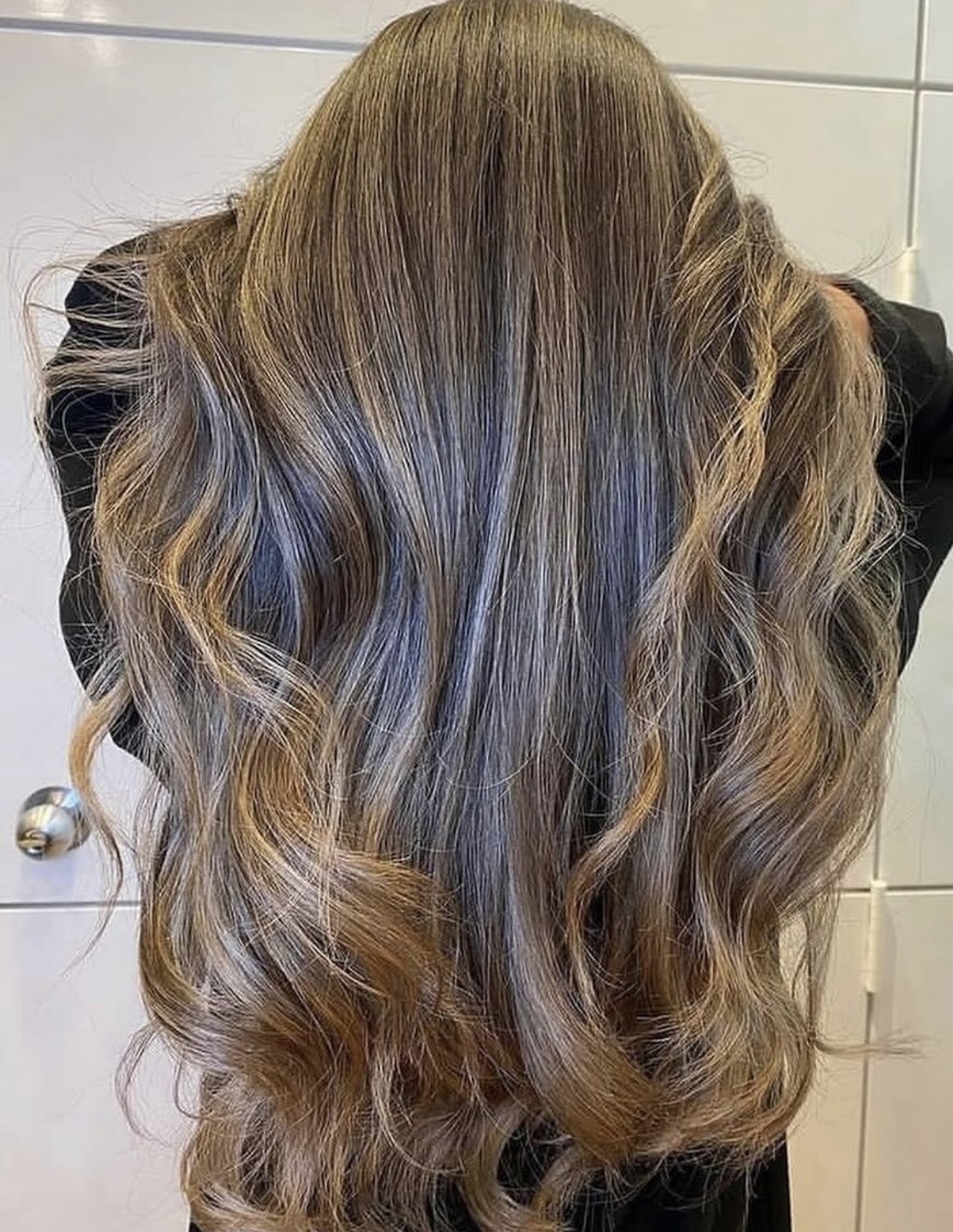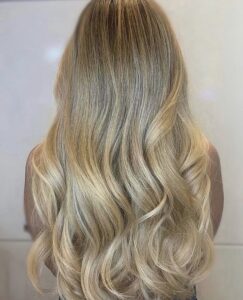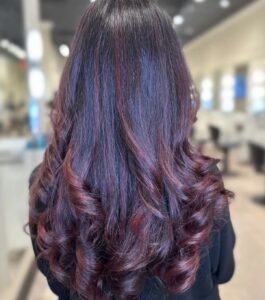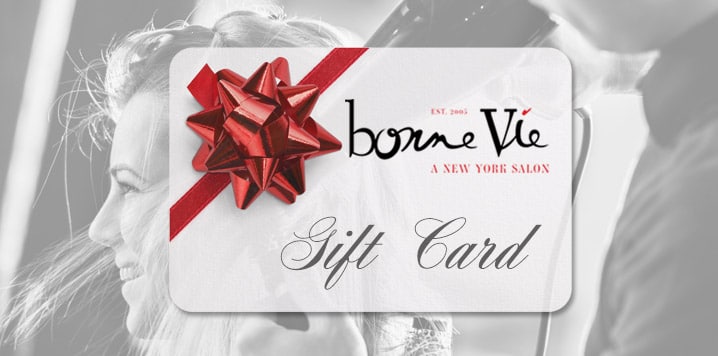
How to Protect my Hair from Florida Sun?
How to Protect My Hair from Florida Sun?
The sun shines, the beaches are dazzling, and most outdoor activities are here. But my hair? The sun makes Florida’s state of Sunshine so desirable that many people move here, but the sun can damage your hair. A lot of our customers at our hair salon in Winter Park ask: “How do I protect my hair?”. The following can strike your hair with intense sunlight, sea salt, and chlorinated pool water, causing it to be brittle and the color being dull. Most people want to know how to get healthy hair while living in the sunshine state of Florida.
Understanding the Sunshine State’s Impact on Hair
Visualize your hair as a long, silky thread. Now, picture them exposed to Florida’s double whammy: hot drying sun with the perpetual blockage of salt, sand, and chlorine.
- The Dehydrating Duo: Sun and heat: The sun’s beam probes your hair and dries it out just as much as the beach towel dried under the sun before you got there. The heat makes the whole drying process shorter, and your hair gets dry and brittle.
- Salt, Sand, and Chlorine: From Vicious Triangle to Healthy Hair: It felicitates your hair, but the water and sand of the beach inflict upon natural oils present in the scalp, which make your hair brittle and rough. Chlorine may be a form of the cleanness of pools, but it may also damage your hair and cause hair color fading.
- UV Rays: “The Silent Culprit” or “The Deterioration of Fading Colors and Frizziness” is a scary, invisible enemy that hits our hair. The effects of the sun’s UV rays on the hair match the impact of the sun’s UV rays on our skin. With time, your hair will slowly lose all proteins due to sun exposure. That will lead to hair dullness, fading of color, and even breakage.
Creating a Shield: Prevention Strategies
Embrace the Shade (Whenever Possible): Budget your outside tasks for evenings or early mornings to avoid the sun’s heat and stay healthy. Search for a shade available every day you go out when the heat is the strongest (from 10 am to 4 pm).
- Hats Are Your Hair’s Best Friend (Wide-Brimmed for the Win!): Never accepting that a quality hat is burdensome is a must! As we face harsh sunlight, narrow ones emerge that allow you to safeguard your scalp and hair follicles from harmful rays. Choose breathable organic materials, for example, straw or cotton, that can provide better ventilation but will not maintain the warmth and make you chilly inside.
- Scarves and Updos: Slimming Concealment: Let your bangs shrink and turn them into a tiny thing as you sport this fashion-forward accessory that gives you an extra dimension by hiding your hair. We use scarves and hairbands as shields from strong sunlight and wind, providing us with the most needed cover and protection. Consider the messy braids or buns with bows, as they match both trends and serve great convenience.
Defense Mechanisms: Products and Treatments
Even though you feel in perfect health during a Florida summer, you might still not have insurance to account for the shine.
Leave-in Conditioners: Locking in Moisture
Leave-in conditioners protect your locks from the sun, dries, salty moisture, and other elements. They preserve natural hairs working just like skin, which is tasked with forming an impenetrable barrier that is difficult for water passage.
Humectants provide multiple types of water and oil content to your facial skin. These three substances, glycerine, hyaluronic acid, and panthenol, are commonly added as humectants.
- Emollients: The hair surface is improved by moisturizers, which is the cuticle’s condition that leads to a noticeably smoother hair feel and more robust management. Shea, coconut, and cocoa butter keep the skin hydrated sufficiently.
- Conditioning Polymers: They embrace the hair shaft to smooth it and add shine. (polymers are inanimate; embrace pronounces with positive meaning) Common materials used are | silicones, polycarbonates, and natural substitutes like hard husks of plants.
Pro Tip: Use a leave-in conditioner on wet hair after a shower or swimming as an input to help detangle and protect the strands from damage. Thus, it offers a deeper penetration into the hair follicle than traditional protection, creating a more robust base to protect the hair from the environment. Hair salons also offer hair treatments.
UV Protective Hairsprays and Serums: An Invisible Shield
Likewise, the outer shell of the sunscreen wards off the damaging effects of the dangerous UV rays, and the ones found in the hairsprays and serums also give you the resistance you need when it comes to your hair. They do not augment the UV rays; they provide their protection by covering or absorbing them. Here’s a breakdown of the key players: Follows will be a brief information about significant participants:
- UV Filters: Although these articles are not the most vibrant, they support structures of UV protection; with them, UV protection can be fully utilized. These substances can also be found in some products as a list of chemicals’ names, including dimethicone, triclosan, and Phenoxyethanol.
- Antioxidants: These antioxidants with free radical scavengers are one of the best shields in the column of leading UV free radicals responsible for hair damage. Powerful antioxidants such as vitamin E, green tea extract, and resveratrol have been identified to possess a high oxidizing potential.
- While the new range of UV-protecting hair products consisting of essential protection does not end with just every necessary protection, it is doing more. New formulas capture the chair of elements such as vitamin (b5) and keratin to provide hair a base and bulk to prevent it from breaking down. Furthermore, personalized schoolbag manufacturers may include waterproof ones for swimmers or workout enthusiasts who sweat too much.
Pro Tip: Don’t let any parts of your scalp get wet when you swim, and use protective hairspray to smooth the strands of your hair that are most exposed to UV rays. Take advantage of this whenever possible, mainly if you are swimming or sweating. You can never be too much careful.
Natural Oils: Nature’s Defense (Coconut, Argan)
On the other hand, there are some filing and concentrating effects that nature has provided us—the limited protection from the sun. People should include sunscreen applications as they protect themselves. Here are two popular choices: One option for you is:
- Coconut Oil: Using this oily natural factor with protective function SPF 4, you will receive some advantages for your health. Even though it doesn’t do the same job as regular sunscreen, it adds some less obvious protection at first. Apart from being highly effective in moisturizing scalp and hair, it is also recommended for brittle and dry hair.
- According to the researchers, coconut oil may appear effective depending on the hair type and application methods. Though sunscreen is similar, wait to jump onto it fully; take it halfway.
- Argan Oil: Vitamin E and antioxidant-rich argan oil fuel the scalp and hair. By slightly protecting against UVA rays, hair oils may have their unique, fundamental function: nourishing and smoothing hair strands.
Pro Tip: Take a little oil and gently add it to your damp hair, pressing to the middle and the ends more. On the other hand, be careful not to overuse heavy treatments that can give light hair a weighed-down effect. It is worth emphasizing that natural oils can only protect the part, so we choose an SPF hair care product for the desired effect.
Post-Sun Rejuvenation: Restoring Lost Moisture
There is no better time to show your locks special attention than after a refreshing dip in the pool.
Cool Rinses: The cuticle is the most essential part of sealing.
The heat is the hair’s number one enemy, and after exposure to the sun, it is a double whammy.
- Sealing the Cuticle: The outer or the cuticle is the first and last layer of the skin. It works as a protein hair coating. The cuticle may be peeled off by hot water, giving your hair a tangled look. You can feel the hair rough, which signifies hair damage. Cold water, as well as the cuff, can be used to help close the cuticle cells. This way, water enters the hair shaft and gives it a shine.
- Reduced Color Fading: The heated water causes grey hair as a follow-up treatment. Also, your cold water is absorbed by when you, dye will not leak out, and your color will keep the fade off for weeks.
Scientific evidence shows that apple cider vinegar, which is mixed with water, should be rinsed after shampooing to make a splendid shine and implement smoothness in the hair-raising, saying that the vinegar is a little acidic to flatten the cuticle of the hairs and cleansing the residues of the product.
Pro Tip: The next step is to rinse the hair using warm water and, soon, the cool water for 30 seconds or more. The fantastic part of this process is that you will immediately experience the difference in texture and manageability of your hair.
Deep Conditioning Treatments: Replenishing Lost Nourishment
On top of regular deep conditioning treatments, one can think of them as a small fude for the hair. They usually are highly concentrated in their ingredient that would lighten up the sun damage spots and have the tightly pulled skin, making it elastic and lifted.
- Ingredients: Drop the excess moisturizers that do not produce emollients and humectants like shea butter and glycerin, hauling, and wheat protein. These do not only have functions to moisturize, strengthen, and make your hair smooth but also promote healthy hair growth.
- Frequency: Spare some time during the weekend or holiday to have moderate repairs done to your hair (select the frequency considering the strength of the hair and the duration of the sun). You can only do up to one or two weekly repairs if you are closed during the holiday period.
The invention has extended the realm of treatments with potent methods that address needs corresponding to the mechanisms of certain diseases. Among these are unique formulas for color treatment or on curly or textured hair. Does your hair often lack shine or break, or is it in any other way disturbing to you? Decide on the perfect deep conditioner to meet your hair condition.
Pro Tip: Soak your hair’s middle and prolonged length with a deep conditioner and damp hair. First, wrap your hair in a bath cap or something similar with warm water for 15-20 min while setting your hairdryer to the lowest level. Use cool water and rinse your hands.
Hair Masks: A Spa Day for Your Strands
After a long day outside, a hair mask is another very effective hair-spoiling way. They are the same in technology as deep conditioners, and they are most likely to be very weighty and boast extra nourishing substances such as botanical or fruit oil extracts.
- Types of Hair Masks: The different hair masks cater to specific needs related to specific hair problems. Usually, these are the various hydrating masks for oily hair, the clarifying masks for dry hair, and the protein masks to lock weakened hair.
- This micellar technology is a natural replacement for most commercially used hair products. Seek masks containing skincare ingredients and micellar technology masks. The power of the micellar water is based on the fact that it gently removes the excess; nevertheless, the natural oils, therefore, your hair and scalp remain refreshed and rejuvenated.
Pro Tip: Choose a hair mask type appropriate for your hair type and follow the manufacturer’s instructions. Some ask for rinsing; others should be left in as a leave-in conditioner for the best hydration outcome.
Healthy Habits for Long-Term Protection
Hydration from Within: Water is Key
As the plant is, in this case, think about hair. It is the hair’s water, and in the same way, the plant needs hydration.
- Moisture Balance: Water helps keep the head and good style holding, preventing them from losing to dryness. When the body is deprived of water, the hair gets spoiled and flaky and breaks off easily.
- Scalp Health: Dehydration may cause the scalp to be dried and flake, and it can get irritated, too.
Scientists observed that individualized hydration, which focuses on an individual’s requirements and activity level, shows better results. The ‘eight glasses of water per day’ advice might be a good start, but some things like the climate you live in and the type and size of the physical activity may all indicate your actual need for water. Consult a healthcare professional and draft a personalized day-long drinking routine.
Pro Tip: Taking reusable water bottles with you all day and continuously drinking water will help keep you in good shape. Water, fruits, and vegetables are great hydration additions to your diet.
Minimize Heat Styling: Give Your Hair a Break
Heat styling devices such as curlers, straighteners, and hair dryers could result in enduring hair damage if applied multiple times.
- Preserve Moisture: Heat strips off the natural moisture from your hair, leading to undesirable outcomes, specifically dry and brittle hair.
- Reduces Breakage: The continuous effect of heat can hurt your hair. This weakens your hair shaft, making hair more fragile and hence more prone to breakage or splits.
However, getting rid of all the hot tools together is impossible. Hence, heat protectants should be used on those occasions. The products form a shielding layer surrounding each hair strand that helps prevent damage from hair pressing. In addition, the latest heat styling tools are top-of-the-line, so with advanced heat regulation technology, hair damage chances are reduced.
Pro Tip: Don’t be disappointed with hair; keep your head high and high. Blow drying takes off the most natural moisture from hair. Go for air-drying as much as possible, or use other gentle warming methods like diffusers or rollers. Allowing sufficient time between heat styling sessions will enable you to be gentle with your hair. Heat styling products like hairdryers and flat irons should be applied with minimum heat.
Regular Trims: Banishing Split Ends
Splitting of the hair may be one of the things that reflects very poorly on how people treat their hair, such as being too much in the sun, heat styling, or stylistic abuse.
Preventing Further Damage: The damage from the split ends at the ends of the hair can stack up the shaft, eventually pulling the hair apart and giving you weak and wispy hair that looks less dense.
Encouraging Growth: The jigsaw fixes spit-ends, and snaring hair is also feasible.
They say there is no proper cutting frequency, which can differ depending on your particular hair type and rate of growth. In response to the question, I recommend the following period based on hair length: cut the hair every 6-8 weeks with short hair, cut the medium hair every 8-12 weeks, and long hair every 12-14 weeks. Instantly, remember that a subtle indicator is the presence of split ends earlier in the growth process. Therefore, don’t hesitate to get a haircut if you notice such signs.
Pro Tip: First, consult a specialist who will help you make an informed choice based on your hair type and the desired style. Plan out the questions about the sun damage and the hair issues with a desire to get a trim to remove the dead hair but leave your volume.
Conclusion
Every time you come out for a sunbath, play freedom by participating in Florida’s many different outdoor activities. Be sure to consciously remind yourself of how great a state you live in. Consequently, for the positive, the negative is also present, whether sun, sea, or heat can potentially lead to hair damage. However, methods are available to utilize such actions to keep your hair in its best condition. This would permit you to be bold with the style or design without fear.





